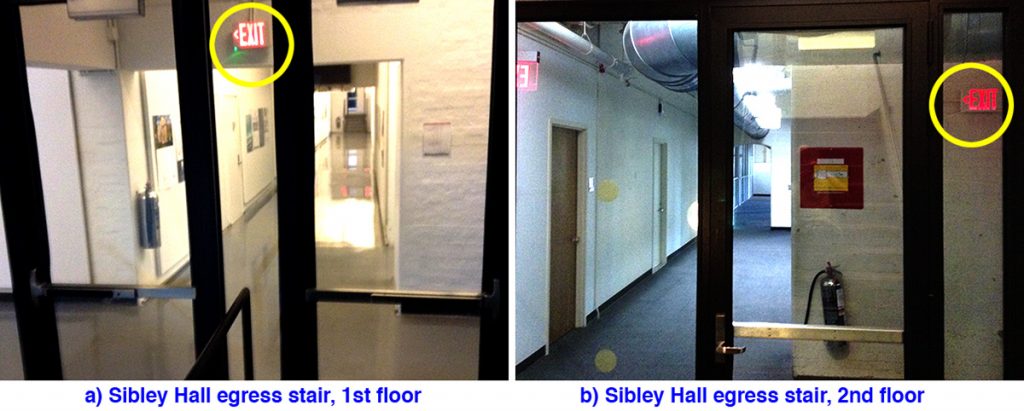Exit signs are supposed to clearly show you the way out of a building. The Building Code of New York State puts it this way: “Where required: …The path of egress travel to exits and within exits shall be clearly marked by readily visible exit signs to clearly indicate the direction of egress travel in cases where the exit or the path of egress travel is not immediately visible to the occupants…” With all the best intentions, Cornell University replaced some old and ordinary doors and walls within the main egress stairwell of its architecture building (E. Sibley Hall) with fire-rated glazing and installed a bunch of illuminated exit signs to show the way out.
Unfortunately, as can be seen in these recent photos, the transparency of the doors and walls violates the spirit, if not the letter, of the Code. This happens because as one reaches the second floor in the stair (image “b” on the right), one sees an exit sign apparently pointing to an exit outside the stair, just like the sign that one sees on the first floor (image “a” on the left). However, while the sign on the first floor actually points to the exit discharge, the sign on the second floor points away from the exit discharge. In fact, this second-floor sign in intended to get you into the stair from the outside, not to induce you to leave the stair. However, because people using the stair shaft can now see exit signs outside the stair that were not meant to be seen from within the stair itself, what was a simple path of egress has become confusing and therefore dangerous.

